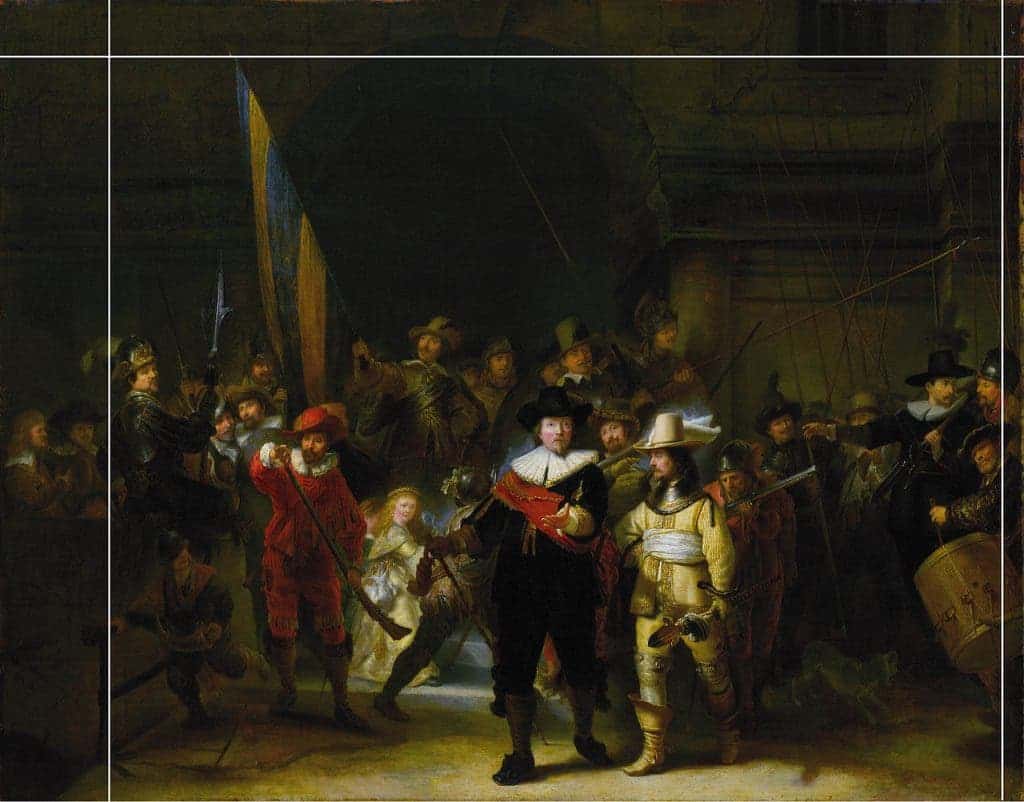
In 1642, famous Dutch painter Rembrandt van Rijn completed a large painting called Militia Company of District II under the Command of Captain Frans Banninck Cocq — today, the painting is commonly referred to as The Night Watch. It was the height of the Dutch Golden Age, and The Night Watch brilliantly showcased that.
The painting measured 363 cm × 437 cm (11.91 ft × 14.34 ft) — so big that the characters in it were almost life-sized, but that’s only the start of what makes it so special. Rembrandt made dramatic use of light and shadow and also created the perception of motion in what would normally be a stationary military group portrait. Unfortunately, though, the painting was trimmed in 1715 to fit between two doors at Amsterdam City Hall.
For over 300 years, the painting has been missing 60cm (2ft) from the left, 22cm from the top, 12cm from the bottom and 7cm from the right. Now, computer software has restored the missing parts.
Artificial art
Artificial Intelligence (AI) works through a process called machine learning. Existing information is fed into the algorithm, which then does its best to produce new outcomes based on the data it was given. The Rijksmuseum in Amsterdam, where the painting is displayed, used two images to feed the AI. The first was a high-resolution scan of the original, and the second was a painted copy done before the trimming by Gerrit Lundens (see above).
In other words, rather than have an artist create a copy, the researchers had the AI reproduce the original material from a copy, but using Rembrandt’s original style.

The resulting images were then printed and mounted next to the original painting so visitors can admire the whole painting as it was completed by Rembrandt — or at least, the closest thing to that we can get.
“Our attempt here is to make a best guess, without the hand of an artist, into what The Night Watch looked like,” Robert Erdmann, senior scientist at the Rijksmuseum, told the BBC.
The painting reveals three new figures: two militiamen and a young boy. In addition, the AI offered a clearer view of the boy in the left foreground, running away from the militia. Since these are real characters, the addition is significant because it shows just what Rembrandt wanted to reproduce. But perhaps even more significantly, the additions complete Rembrandt’s vision of the painting, which was to grab the viewer’s attention and drag it from place to place, by creating the illusion of motion.
“It is spectacular because what Rembrandt painted was Captain Frans Banninck Cocq ordering his lieutenants to march out and that is now exactly what you see,” said Taco Dibbits, director of the Rijksmuseum, for The Guardian.
“With the addition especially on the left and the bottom, an empty space is created in the painting where they march towards. When the painting was cut [the lieutenants] were in the centre, but Rembrandt intended them to be off-centre marching towards that empty space, and that is the genius that Rembrandt understands: you create movement, a dynamic of the troops marching towards the left of the painting.”
The result, museum officials say, is better than the Lundens copy. Because the painter had been sitting on the left side of the picture, his perspective was slightly skewed. Lundens also used different types of paint than Rembrandt, and his work aged differently than the original.
Even though the results of this project are impressive, museum Dibbits still hopes someone will turn up one day with the missing parts of the original — especially since by 1715, Rembrandt was already an appreciated (and expensive) artist. Until that happens, if it does happen at all, we’ll have to settle for the AI version.


